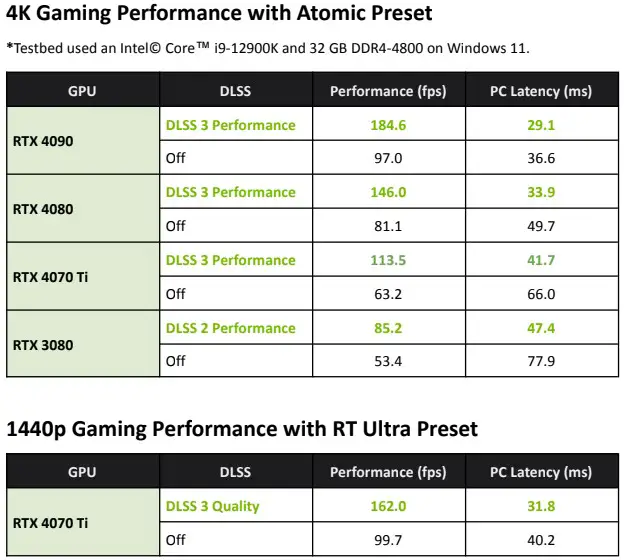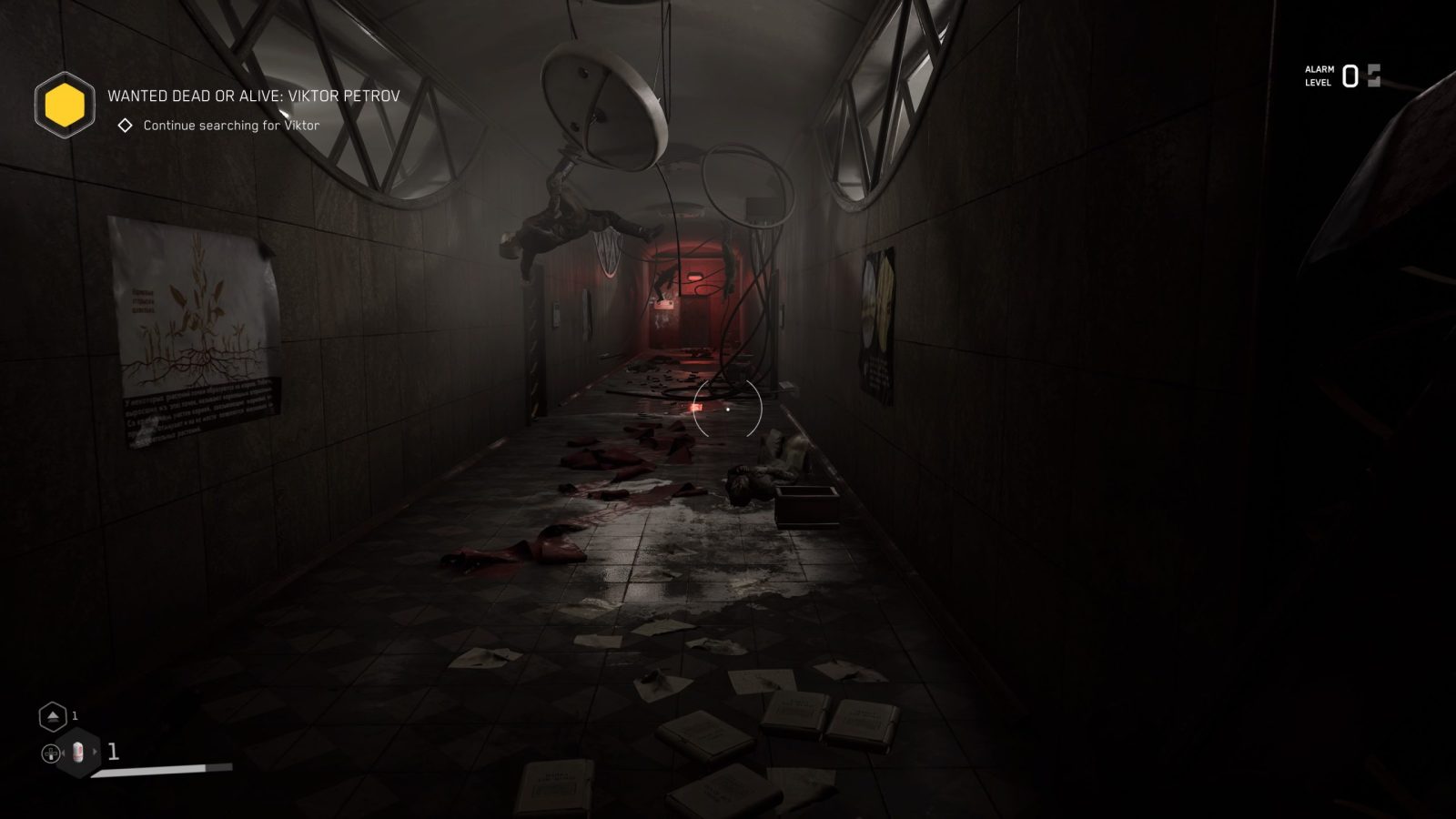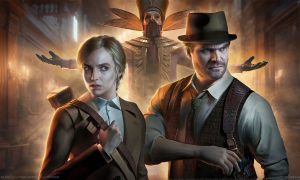The saying goes “if it sounds too good to be true, it probably is”. That’s at least initially how I felt about Atomic Heart. It had all the trappings of my kind of game, from setting to gameplay and more, and I’ve wanted so badly for it to be good. Delay after delay took place, and you had to wonder if the team at Mundfish might have bitten off more than they could chew. With the final credits rolling, I can definitively cancel out any negativity: Atomic Heart is outstanding and one of the best games I’ve played in the narrative FPS genre in years.
Most people are going to look at this game and immediately compare it to Bioshock. It’s a fair comparison too, even with my opinion that Bioshock might be one of the few legitimate 100/100 games in existence. The Soviet atmosphere, the powers from your left hand mixed with guns and melee weapons occupying the right, the trippy storyline; it’s very similar. That’s not necessarily a bad thing though, because in an industry where everyone has done everything, your best bet is often improving and innovating on what exists. That, and we haven’t had something that similar to Bioshock in a while beyond maybe the Metro series, and even that stays in its own lane.
I don’t know that there are many areas that Atomic Heart doesn’t excel in. We’re going to dive deeper into what makes it tick, but it’s really great in most aspects. Starting with the technical details, the performance is rock solid and the visuals are top-notch, with tight 60fps and 4K. I know quite a few people were worried we might get “Watchdogged”, as in seeing pretty trailers and not getting the result once we had it in hand. That’s not the case at all, with impressive visuals throughout, especially at scale. The rolling mountains, valleys, and other areas of Facility 3826 will take you by surprise, with crisp graphical fidelity you don’t expect in a studio’s debut. It only gets better when you enter the catacombs of each mission area, with even more detail in the enclosed spaces. While it may not have the same bells and whistles the PC does, the console version still packs a punch, and as you can see in our side-by-side comparison, it’s no slouch.
Speaking of PC, Atomic Heart certainly uses everything to it’s advantage, including partnering with NVIDIA to up the ante. Here’s some of what you can expect from that collaboration-
The best way to enjoy Atomic Heart is by enabling DLSS 3, which gives you comparable image
quality to native while multiplying performance and enables NVIDIA Reflex which gives you the
lowest latency. Each technology can be enabled separately, but the best way to play Atomic
Heart is with all of them enabled together.When DLSS 3 is enabled (Reflex is automatically enabled with DLSS 3), 4K performance with a
GeForce RTX 4090 will be boosted by 90% to 184 FPS, while latency is lowered from 36.6 ms at
native to 29.1ms. With a GeForce RTX 4080 increased by 80% to 146 FPS, while latency is
lowered from 49.7 ms at native to 33.9ms. With a GeForce RTX 4070 Ti at 1440p, DLSS 3
increases performance by 62%, running at max settings at over 160 FPS and latency drops from
66ms at native to 41.7ms!
Atomic Heart doesn’t just rely on a pretty face to capture your attention either. I’ve mentioned the setting already as something I’ve been over the moon for, and it nails what it’s going for. The Soviet Utopia is unsettling, and it’s supposed to be. Seeing the parades and celebrations of this alternate world makes you feel like something is going on backstage, and you’re totally right in that assumption. You don’t see the full effect at the start, with a long exposition to begin your journey, but once the first robot attacks, everything hits the fan.
You are P-3, and the very little you know at the start of Atomic Heart is you’re a special agent working for Dmitry Sechenov, a brilliant scientist whose genius has birthed the paradise you live in. “Kollektiv” is an AI network created by Sechenov, and 2.0 is coming to make things even better. Because of his work, robots now fill the streets of Russia, taking on the jobs no one wants to do and introducing a new renaissance. This allows people to chase their dreams, but there is a bit of a cost to the new Kollektiv 2.0, with thought devices to install on their temples to control the robots, along with a neuro-Polymer injection. Such is the price of the perfect society though, and this progress is certainly presented as preferable in the opening scenes.
Then everything goes wrong. As you’re going to check out a disturbance below the floating city of Chelomey in Facility 3826, a random robot attacks your vehicle, casting you into a building below. You get a few moments to compose yourself and make your way to a pod that will airlift you to the base, but yet again the robots come after you, and after a crash landing you have to pick yourself up and get a move on. This is truly where everything begins, with P-3 summoning an ax off of the ground and readying himself for the terrors ahead.
Terror is honestly the best word for it. Atomic Heart never really leans into a horror setting but is more akin to something like Bioshock or Doom. While not every robot is creepy, there’s something to some of them that make you shudder. The everyday male bots are especially freaky, with a mustache that underlines the sinister feeling behind the game. I think some of it is the lifeless, dead-eyed look you get out of them. It’s like walking into an antique store and seeing some of the toys, statues, or figures that were made back in the 50s-60s; like how was this not recognized for how unsettling it was? I have to commend Mundfish on the designs, they set the atmosphere as you traverse Facility 3826.
And that’s not all when it comes to enemies either. Mundfish has plenty in their arsenal to keep you on your toes, with devil plants that turn corpses into weaponized undead, or weird tendril blood monsters that prowl around. Beyond that you’ll be fighting plenty of variants of each, some flying or with completely different attack patterns or the standard “heavy” enemies that pack a big punch. Every once in a while you feel like you’ve been fighting the same exact baddie, and right about then you find the next variant. The timing is impeccable and keeps things fresh for the players. Oh, and boss fights? These are tremendous, memorable, and give a feeling of accomplishment when you finish them.
Another thing that keeps you engaged is the combat, and it’s a blast. The weaponry you use is decently varied, and the best part is that the system doesn’t feel bloated. There are only twelve types of weapons, although there are plenty of upgrades to find. My favorites have strangely enough been the melee weapons; I was initially concerned the melee combat would be clunky in watching trailers, but I’ve loved wacking robots with each of them. For guns, the Kalash (AK-47) has been a go-to because of familiarity, but the Electro is also fun to use as an energy pistol. The good thing about the energy weapons is they charge from your engaging in melee combat, so it’s an easy recharge when you run low.
Combining these with your powers is what makes Atomic Heart tick. It’s all great to go and chop at a mutant, but if I freeze him in his tracks it’s even better. Using these tricks allows the combat to be more varied than simply shooting or hacking everything in an area and moving on, you have to consider what is going to give you an advantage versus each of these foes. For instance, in the theater area, I had to wait for a robot to give its stage performance before I could move on. There were tons of sprouts and mutants heading my way, and I was able to use the mass telekinesis power to lift most of them in the air and slam them down, killing almost every one of them instantly. By the way, that one is the definition of power fantasy, and it’s extremely satisfying to use. Using all of the tools at your disposal is what will be the difference in whether you move on to the next area or not, so make sure you don’t stick with one weapon or power.
Part of this will be in upgrading what’s in hand… or coming out of it. You have to access NORA, a machine that your initial encounter with is… well, you’ll find out. In any case, it’s nothing new, with a skill tree/upgrade system you’ll be familiar with. Select your weapon, find the thing you want to upgrade, and spend the items necessary to do so. Same with your abilities, find the skill and spend your collected polymer to unlock it. It’s simple, and honestly not something you need to reinvent as it works.
What has been reinvented is the looting, and I can’t get over how awesome it is. Most games have you examine an enemy or container/desk/etc to search for the things you need. Atomic Heart throws this out the window and says, “take it all”. There’s one command (on PS5 it’s the right shoulder button, R1), and you use your telekinesis to pull all the crafting or consumables from said foe or location. It’s one of the most satisfying mechanics I’ve used in a game recently, watching as a robot or mutant rips apart, or as drawers and doors slam open as my stuff flies toward me. Simplicity can be beautiful, and it definitely is here.
Something I wouldn’t call simple are the puzzles, and I’m somewhat surprised at them even being here. You don’t think of this genre as one containing the likes of these, with intricate ideas that will have you scratching your head at times. They meld with the setting too, making a lasting impression as you decipher them. I don’t think any of them have been unfair, but I’ve several times had to reexamine my environment to figure out what I was missing. Even the locks you’ll take on are fun to solve, with several different versions to keep things interesting. The only one that isn’t is a standard one, the ole “twist your lockpick until it turns”, which just isn’t designed well. Thankfully it pops up rarely, so the best ones stay at the surface.
To get the best out of your arsenal, you’re going to have to explore Atomic Heart’s open world. Now, this isn’t the same as most games, with these areas clearly taking a backseat to the main story- it’s completely optional. You can see this in the density of it, with a lack of locations to visit beyond specific places, even though it’s big enough for you to need a car to get from point A to point B. I didn’t spend a lot of time looking around (I was engrossed in the story), but I really like the dungeons that exist here, which are called testing grounds. Dungeons they definitely are, because after a cool boss fight and a few puzzles, I found myself at the end with several rewards in new pieces to upgrade my weapons. It’s a neat way to use an open world, although I wouldn’t mind if they expanded on it given the story largely doesn’t occur in it.
That’s because everything you do in the main missions happens within several locations inside Facility 3826. Each one has its own personality and sets the mood for what you’ll encounter. They’re all creepy, with dead bodies littering the floor and blood everywhere. Nothing good is going on inside the walls, and as P-3 continues on you’ll find out specific things about each place through dialogue, emails, and audio logs that tell you not everything is as it seems, and that’s before the robots went wild. There’s a dark cloud hanging over, and the rain has been falling for a while.
This exists in the story as well. Right away you can tell things aren’t right with P-3, who is as obedient as a clone in Star Wars. What’s worse is he doesn’t remember much of anything, even as his glove, CHAR-LES a.k.a. Charles, asks him questions that seem specific to his past. The story does a good job of drip-feeding revelations about the world and characters, but even then some things are going to surprise you when you think you have things figured out. I don’t know that I ever had an “Andrew Ryan” moment, but Mundfish gets close. As a collective effort, you’re going to lose yourself in the narrative, setting, and what’s going on. You know it’s good when you look at the time and it’s been three hours. I just want more, Mundfish has me hooked to Atomic Heart.
A lot of why the story lands is because of some phenomenal performances by the cast. P-3 comes across as almost a “Duke Nukem” type character and is definitely more chatty than I expected. He’s also corny as heck, and while that might be off-putting to some, I found it on the campy side. I may even start using “Crispy critters” in my daily dialogue (you’ll know what I mean when you play Atomic Heart). Similarly, Charles has a lot to say, but you enjoy the context your trusty glove adds. Even Sechenov is perfectly voiced, with a tone that takes on a mysterious nature and leaves you guessing his true intentions. None of this is possible without an expert cast, and they nailed it. The only ones that felt somewhat underutilized were Molotov and Larisa Filatova, whose appearances are briefer than I wanted them to be.
To finish this up, let’s talk about a few things that didn’t work, and honestly, it’s very little. The platforming sections (of which there are few), feel very clunky and don’t always work as well as they should. Besides this, I ran into a few bugs. There was a near flip-book moment in the first facility where several robots were chugging around in circles, and when I jumped on one to get to a ledge that led to the next area, I started chugging. There was also a spot of awful blending audio when I was chasing Petrov into a building, along with some terrible ambient dialogue that made it almost impossible to hear what was being said. A boss fight also could have had missing music behind it, but I can’t be certain. I had one other issue where I clipped into a box and got stuck, and that was the only one I had to restart. Thankfully there are plenty of save spots so it didn’t cost me much, and the other bugs never resurfaced in other instances.
Bonus: Steam Deck Impressions
While I slashed and hacked my way through Facility 3826 on PS5, I had to try this one out on the Steam Deck. What’s most surprising is the frame rate, I was able to get a mostly solid 50-60fps throughout much of my time playing it. There were a few moments with a lot of explosions on the screen where it dipped, but that’s few and far in between. The only caveat; you’re running your graphics settings on low. Any higher and you’re asking for some really poor performance, I don’t know that I even got thirty on medium settings. It stinks, but at the same time doesn’t look too bad on the Steam Deck’s screen. It’s a sacrifice you’re most likely willing to make and probably have already with other games, and you might not even be getting 60fps with those.
David Burdette is a gamer/writer/content creator from TN and Lead Editor for Gaming Trend. He loves Playstation, Star Wars, Marvel, and many other fandoms. He also plays way too much Call Of Duty. You can chat with him on Twitter @SplitEnd89.

2023 has already been strong with Game of the Year contenders, and Atomic Heart is another one of them. It lives up to all of the hype and all of its promises; an amazing debut game for Mundfish. Nailing down a few things Atomic Heart is phenomenal at is nearly impossible because it’s extraordinary in all of them. This isn’t just my favorite game of this year, it might be one of my favorites of the decade.
PROS
- Amazing setting and atmosphere
- Incredibly diverse and engaging combat
- Immersive story and fantastic performances
- Impeccable design (puzzles, robots, etc)
- Sensational visuals
CONS
- A few bugs
- Platforming isn’t great




 Buy Now
Buy Now
 Buy Now
Buy Now
 Buy Now
Buy Now
 Buy Now
Buy Now
 Buy Now
Buy Now
 Buy Now
Buy Now















